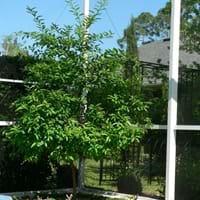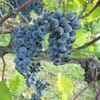Life Span
Annual and Perennial
Perennial
Origin
Hybrid origin
Hybrid origin
Types
not available
Eustis, Lakeland, Tavares
Number of Varieties
Not Available
Habitat
Terrestrial
gardens, Woodlands
USDA Hardiness Zone
5-8
11-12
Sunset Zone
1a, 1b, 2a, 2b, 3a, 3b, 4, 5, 6, 7, 8, 9, 14, 15, 16, 17, 18, 19, 20, 21, 22, 23, 24
H1, H2, 7, 8, 9, 14, 15, 16, 17, 18, 19, 20, 21, 22, 23, 24
Habit
Vining/Climbing
Oval or Rounded
Minimum Width
Not Available
Flower Color Modifier
Bicolor
Bicolor
Fruit Color
Dark Red, Violet
Light Yellow, Yellow green
Leaf Color in Spring
Green
Green, Dark Green
Leaf Color in Summer
Green
Dark Green
Leaf Color in Fall
Orange, Gold, Bronze
Dark Green
Leaf Color in Winter
Light Green
Light Green
Leaf Shape
Irregular
Ovate
Plant Season
Spring, Summer, Fall
Spring, Summer, Fall, Winter
Sunlight
Full Sun, Partial Sun
Full Sun
Type of Soil
Clay, Loam, Sand
Loam, Sand
The pH of Soil
Acidic, Neutral, Alkaline
Acidic, Neutral
Soil Drainage
Well drained
Well drained
Bloom Time
Late Spring, Early Summer, Summer
Late Spring, Early Summer
Tolerances
Drought
Drought
Where to Plant?
Container, Ground
Container, Ground, Pot
How to Plant?
Seedlings, Transplanting
Divison, Seedlings
Plant Maintenance
Medium
High
Watering Requirements
Water occasionally
Do not let dry out between waterings
In Summer
Less Watering
Moderate
In Spring
Adequately
Ample Water
In Winter
Ample Water
Less Watering
Soil pH
Acidic, Neutral, Alkaline
Acidic, Neutral
Soil Type
Clay, Loam, Sand
Loam, Sand
Soil Drainage Capacity
Well drained
Well drained
Sun Exposure
Full Sun, Partial Sun
Full Sun
Pruning
Remove damaged leaves, Remove dead branches, Remove dead leaves
Remove dead branches
Fertilizers
All-Purpose Liquid Fertilizer
All-Purpose Liquid Fertilizer, organic fertlizers
Pests and Diseases
Red blotch
Citrus foot rot, Citrus gummosis, Citrus leaf miner
Plant Tolerance
Drought
Drought
Flowers
Insignificant
Showy
Flower Petal Number
Single
Single
Foliage Texture
Coarse
Medium
Foliage Sheen
Glossy
Glossy
Attracts
Not Available
Not Available
Allergy
no allergic reactions
Not Available
Aesthetic Uses
Decorating walls, Showy Purposes
Showy Purposes
Beauty Benefits
used as a dye
Not Available
Environmental Uses
Air purification, soil erosion prevension on hill slopes
Air purification
Medicinal Uses
Diarrhea, Fever, Headache, Hepatitis, Rheumatism, Stomach pain, Urinary tract problems
Fiber, Vitamin C
Part of Plant Used
Fruits, Leaves
Fruits
Other Uses
Used for producing cooking oil
Used As Food, Used in making beverages
Used As Indoor Plant
No
Yes
Used As Outdoor Plant
Yes
Yes
Garden Design
Edible, Fruit / Fruit Tree, Vine
Edible, Fruit / Fruit Tree, Shade Trees
Botanical Name
VITIS labrusca 'Fragola'
X CITROFORTUNELLA floridana
Common Name
Fox Grape, Red Grape
Limequat
In Hindi
लाल अंगूर
Limequat
In German
Rote Trauben
Limequat
In French
Raisin rouge
Limequat
In Spanish
Uvas rojas
Limequat
In Greek
κόκκινα σταφύλια
Limequat
In Portuguese
Uvas vermelhas
Limequat
In Polish
czerwone winogrona
Limequat
Phylum
Magnoliophyta
Magnoliophyta
Class
Magnoliopsida
Magnoliopsida
Order
Rhamnales
Sapindales
Clade
Angiosperms, Eudicots, Rosids
Angiosperms, Eudicots, Rosids
Tribe
Not Available
Not Available
Subfamily
Not Available
Not Available
Number of Species
Not Available
Not Available
Season and Care of Red Grapes and Limequat
Season and care of Red Grapes and Limequat is important to know. While considering everything about Red Grapes and Limequat Care, growing season is an essential factor. Red Grapes season is Spring, Summer and Fall and Limequat season is Spring, Summer and Fall. The type of soil for Red Grapes is Clay, Loam, Sand and for Limequat is Loam, Sand while the PH of soil for Red Grapes is Acidic, Neutral, Alkaline and for Limequat is Acidic, Neutral.
Red Grapes and Limequat Physical Information
Red Grapes and Limequat physical information is very important for comparison. Red Grapes height is 300.00 cm and width Not Available whereas Limequat height is 300.00 cm and width 180.00 cm. The color specification of Red Grapes and Limequat are as follows:
Red Grapes flower color: White
Red Grapes leaf color: Green
Limequat flower color: White
- Limequat leaf color: Green and Dark Green
Care of Red Grapes and Limequat
Care of Red Grapes and Limequat include pruning, fertilizers, watering etc. Red Grapes pruning is done Remove damaged leaves, Remove dead branches and Remove dead leaves and Limequat pruning is done Remove dead branches. In summer Red Grapes needs Less Watering and in winter, it needs Ample Water. Whereas, in summer Limequat needs Moderate and in winter, it needs Less Watering.





